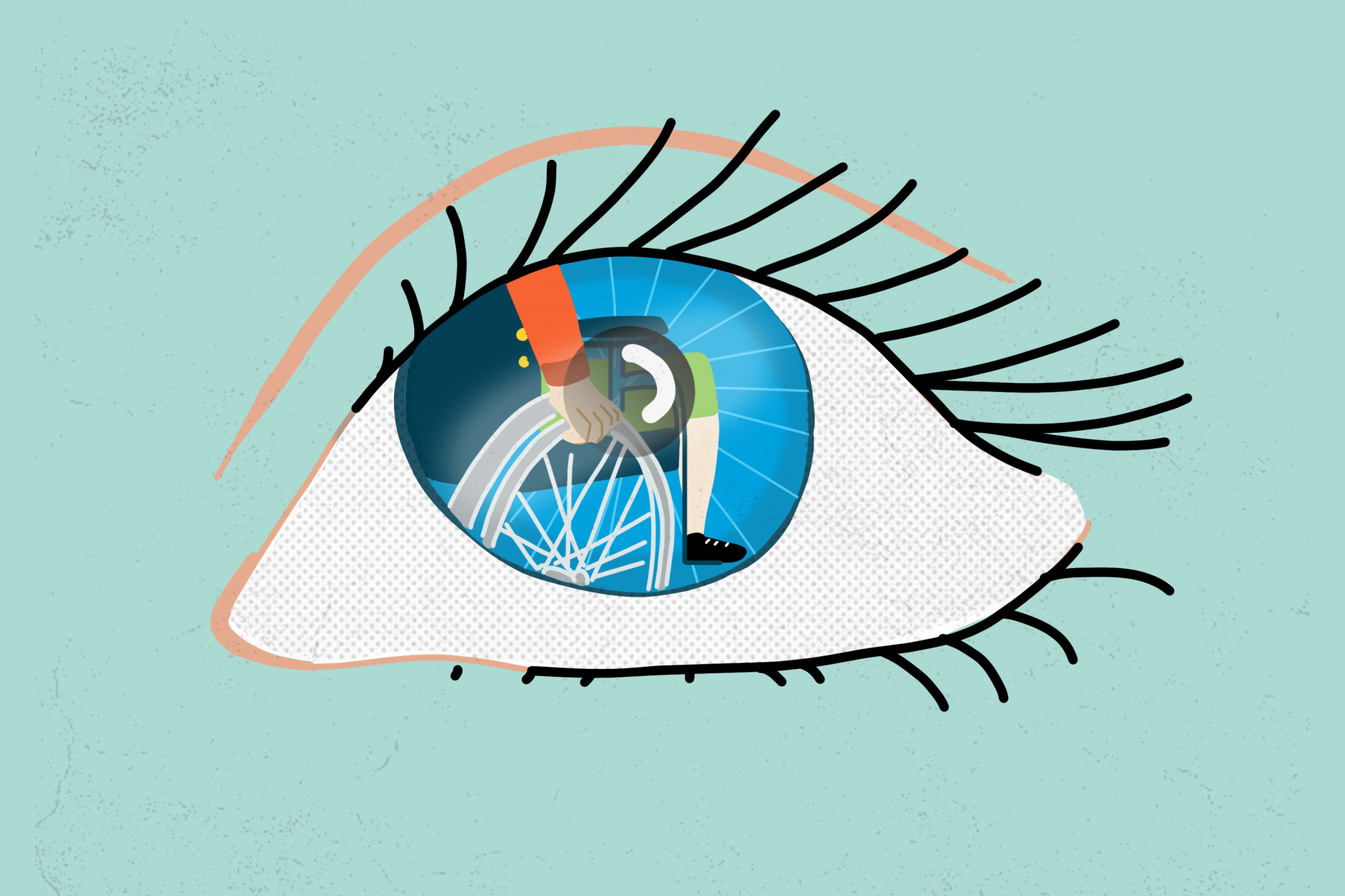
I was at the park with my toddler when we saw another little boy in a wheelchair. My son stopped in his tracks and was staring at this other child. I was uncomfortable so I told my child not to stare. How can I teach my son about social boundaries while introducing acceptance of people who may look different than we do?
Dear OK to Stare,
In my years working at children's hospitals, I became accustomed to the visual landscape as I walked the halls—children rolling along in wheelchairs, sporting scars from burns or serious injuries, walking with a limp, making strange sounds in their sing-song ways of communicating. To me, it was a beautiful tapestry of not just physically visible differences, but of the strength and resilience of children.
As my own babies became more observant toddlers and preschoolers, I started to walk the halls through their eyes, realizing what these children may look like to my children, and how they might react. I realized I needed to start conversations with them very young to plant the seeds that these children who look different are still kids just like them.
It\’s OK to Stare … Then Talk
It's completely understandable that your first impulse when you noticed your son staring was to tell him not to. We have all grown up socialized to "not stare" as part of being polite. This is especially difficult for young children who are always staring, whether it's at the mechanics of a garbage truck, or a person.
I will share what I have heard countless times from parents of children with some form of visible difference: it's OK to stare. Children as young as 2 and 3 start to be aware of physical differences, like skin color, and are curious. This curiosity builds their understanding of the world and the people around them. Staring is a sign of this curiosity, not rudeness.
After the normal response of staring, the key is to channel this curiosity into connection. Encourage them to approach the child as they would any other child, introducing themselves or asking what they want to play. And as much as it may counter every lesson we have ever learned about politeness, it's OK for your child to ask questions. It's not like the child with the disability hasn't realized they are different, and it's often a welcome opportunity to get to know each other a bit, and then move on to playing and having fun.
Encourage Connection and Inclusion
The more we as parents encourage this connection between our children and other children who somehow appear "different," the better chance we are giving them to practice kindness and inclusion. If a child grows up with a close friend in a wheelchair, for example, that difference is just a difference on the surface, and not a way to be separate.
In my more than a decade of working with children interfacing with the world with all kinds of physical differences, what they want more than anything is to be treated like every other kid. What hurts them is feeling ignored and isolated because other children seem unsure of how to interact with them. As they get older, this often transforms into teasing and bullying, which causes enormous suffering.
Model Positive Social Interactions
If your son seems unsure about saying hi, you can model for him by approaching the child with warmth and friendliness, talking to him like you would talk to any other potential friend for your son. The parents of children with physical differences are also very experienced in navigating these situations, so feel free to look to them for the lead.
If you feel a misstep occurs—an awkward question or moment that you feel embarrassed about—it's OK to acknowledge this and ask your own questions. Believe me, this is much better than suddenly leaving the interaction, which will definitely feel bad for everyone. If you are worried your son is not respecting social boundaries, you can check in about it: "I'm sorry if he's asking too many questions … just let him know if it's too many!"
Most children with a form of physical difference have become practiced at talking about it, so with the opportunity for interaction, their comfort level may help you feel more comfortable as well.
The Bottom Line
For better or worse, humans have an impulse to group themselves by who seems similar. For children with visible differences, this often leaves them outside of social groups, isolated. So, a single experience like a playdate, where curiosity can transform into connection, can make all the difference.
Submit your parenting questions here, and they may be answered in future 'Ask Your Mom' columns.
Emily Edlynn, Ph.D., is the author of The Art and Science of Mom parenting blog and a mother of three from Oak Park, Illinois. She is a clinical psychologist in private practice who specializes in working with children and adolescents.
Read more 'Ask Your Mom' columns:

